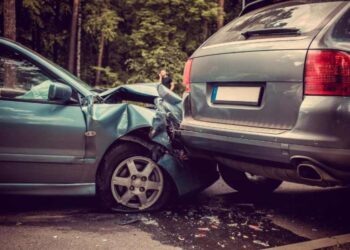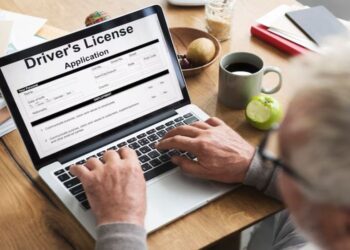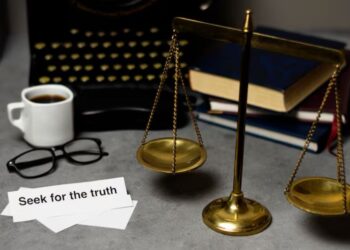In the disorienting aftermath of a car accident in Fremont, having a clear, immediate course of action can greatly influence the outcome – both regarding personal safety and legal ramifications. The initial steps to guarantee safety, alerting authorities, and documenting the scene are paramount. Yet, traversing the procedural labyrinth that follows – from understanding local laws to dealing with insurance claims and post-accident trauma – can be equally challenging. Let’s embark on a comprehensive exploration of these steps, their importance, and the way they shape the aftermath of a car accident in Fremont.
Prioritizing Safety Post-Accident
In the aftermath of a car accident in Fremont, paramount importance lies in addressing immediate safety concerns to mitigate any further harm or damage. This critical phase calls for defensive driving and the swift involvement of roadside assistance.
Defensive driving techniques, such as moving the vehicle to a safer location, can help prevent further collisions and maintain the flow of traffic. It is essential to activate hazard lights and position emergency triangles if available, to alert oncoming drivers of the situation. Meanwhile, calling for roadside assistance is a necessary step. This professional help can provide quick, safe removal of vehicles, debris, or any other obstructions posing a threat.
Roadside assistance can also offer a valuable layer of security in such unsettling circumstances. Their experience and expertise in handling such incidents can help alleviate stress, manage the situation efficiently, and make sure safety protocols are strictly adhered to.
In essence, prioritizing safety post-accident is not just about immediate actions but also involves a mindset. It demands an understanding of the benefits of defensive driving and the importance of leveraging the support offered by roadside assistance services. Remember, the goal is to prevent harm and guarantee everyone’s wellbeing in these testing times.
Assessing Injuries: What to Do
Once safety measures have been addressed, the next immediate concern after a car accident should be evaluating any potential injuries sustained by the involved parties. Understanding the severity of any injuries is essential, as it informs the next steps of action required, ranging from immediate medical attention to pain management.
Injury severity varies widely in car accidents, from minor cuts and bruises to serious conditions that may not manifest immediately, such as internal bleeding or whiplash. Quick and accurate assessment can be lifesaving in severe cases. While waiting for medical professionals, look for visible injuries, ask about pain levels, and monitor for signs of disorientation or confusion, which might indicate a possible concussion or other serious condition.
Pain management is vital, especially in the moments following the accident. Depending on the severity of the injury, over-the-counter pain relievers may be used temporarily. However, it’s essential not to move anyone severely injured to avoid exacerbating the injury. Remember, in cases of severe injuries, professional medical help is critical. Prompt and accurate injury assessment post-accident can greatly impact the prognosis and recovery of all involved parties.
Alerting the Fremont Police
Following the assessment of injuries, your next course of action should be contacting the Fremont Police to report the accident immediately. It is vital that you initiate this emergency communication as swiftly as possible to guarantee that the appropriate actions are taken and the police protocol is correctly followed.
This step should never be overlooked, regardless of the apparent severity of the accident. Even if the damages appear minor, alerting the Fremont Police is still essential. Doing so creates an official record of the incident which may prove useful during insurance claims or potential legal proceedings.
When you reach the police, provide a clear account of the incident. Be honest and straightforward. Remember that providing false information to law enforcement is illegal and can lead to serious consequences.
Additionally, it is beneficial to familiarize yourself with the local police protocol for reporting car accidents in Fremont. This knowledge can help ensure that you are providing all the necessary information and following the correct steps.
Documenting the Accident Scene
Ensuring a thorough record of the accident scene is pivotal in any car accident situation. This process involves three main steps; gathering important information, taking photographs of accident details, and noting environmental factors. By meticulously following these steps, you can provide an objective and detailed account of the incident, which can be instrumental in any ensuing legal or insurance proceedings.
Gathering Crucial Information
Documenting the accident scene meticulously is a pivotal step in gathering essential information, as it provides tangible proof of the circumstances surrounding the incident. This process, which is part of emergency preparedness, involves recording details such as the time and location of the accident, the weather conditions, and the state of the road. Coupled with accident avoidance techniques, these details can help determine the causes and effects of the incident.
To gather vital information, you should note the make, model, and license plate number of all vehicles involved. It’s also important to collect the insurance information of the other drivers, including their policy number and the name of their insurance company. If there were witnesses to the accident, their contact details and statements can be invaluable.
In addition, if law enforcement officers were present, you should record their names, badge numbers, and the police report number. This information will be crucial when dealing with insurance companies or in the unfortunate event that legal action is necessary.
Photographing Accident Details
Capturing visual evidence through photography is an essential step in documenting the accident scene, as it can provide an important, factual account of the aftermath. The importance of accident photography lies in its ability to present an accurate depiction of the incident, which can greatly aid in any ensuing legal or insurance pursuits.
Here are some practical accident photography tips. To begin with, prioritize your safety before you start taking photos. Once safe, use your smartphone for documentation, capturing broad overviews of the scene and then focusing in on specific details. Photograph all vehicles involved from various angles, showing their positions and any visible damages. Don’t forget to capture details like skid marks, broken glass, or debris.
Smartphone usage for documentation is not limited to photos alone. Use the video function to create a walkthrough of the accident scene, narrating any important details. Remember to take pictures or videos of the license plates of all vehicles involved.
While your memories may fade, photographs remain a permanent, detailed record. In the aftermath of an accident, your well-documented photos could be pivotal in clarifying the incident, establishing liability, and ensuring you receive the compensation you are entitled to.
Noting Environmental Factors
In the aftermath of a car accident, documenting the environmental conditions surrounding the incident is an essential step that adds greatly to a thorough understanding of the event. This includes noting weather conditions and traffic signals, which can be vital factors in determining the cause and liability of the accident.
For instance, inclement weather conditions such as rain, fog, or snow can greatly impact driving conditions and visibility. It is important to record such circumstances as they can directly influence vehicle control and reaction times, potentially contributing to the accident’s occurrence.
Traffic signals also play a pivotal role in regulating road safety. Whether it be a malfunctioning light or a disregarded stop sign, the status and operation of traffic signals at the time of the collision should be accurately documented. This information can serve as critical evidence if disputes about fault arise later on.
Moreover, other environmental factors like road construction, potholes, or poorly lit streets should also be documented. Such details can help paint a thorough picture of the accident scene, which can be invaluable for insurance claims or potential legal actions.
Gathering Witness Information
While it may initially seem intimidating, it is of utmost importance to gather information from any witnesses present at the scene of a car accident in Fremont to guarantee a thorough account of the incident. Even unexpected witnesses, such as bystanders or passing motorists, can prove invaluable by providing additional perspectives on the event.
Witness credibility is vital when collecting this information. Make sure to ask relevant questions about their view of the accident, position relative to the scene, and any distractions that may have affected their observations. This will help you assess their reliability and the value of their testimony.
Moreover, it’s crucial to gather their contact information for further communication and potential testimonials. Always remember to approach witnesses respectfully and explain why their input is critical.
In circumstances where witnesses hesitate to share their information, remind them that their cooperation could greatly impact the resolution of the accident claim. Gathering witness information is a key step in building a detailed account of the incident, ensuring that all parties involved receive fair and accurate treatment. Be thorough, be respectful, and most importantly, prioritize witness credibility for a robust account of the incident.
Reporting the Accident to Insurance
After ensuring safety and gathering important information at the accident scene, the next essential step is to report the incident to your insurance company. This process involves initial contact with your insurer, the submission of a fully detailed claim, and diligent follow-ups. Understanding and executing these procedures correctly is key to ensuring a smooth claim process and fair compensation.
Initial Insurance Contact
Contacting your insurance provider should be a top priority once you’ve confirmed all parties involved in the accident are safe and sound. This initial communication is critical and sets the stage for the subsequent steps in the claim resolution process.
In this early communication, it’s vital to be clear, factual, and thorough about the accident’s circumstances. Your understanding of your policy coverage should guide you in furnishing relevant information. This approach could potentially minimize the risk of claim denial based on insufficient or incorrect information.
Even though you might feel overwhelmed by the situation, make sure to note down your claim number and the name of the insurance representative you spoke to. This data will be useful for future reference and follow-ups.
Seek clarity from your insurance provider regarding your policy’s coverage limits, deductibles, and any specific procedures you need to follow. Understanding these aspects will help you navigate the claim process smoothly.
Claim Submission Process
Understanding the intricacies of the claim submission process requires a clear comprehension of your policy details and the steps necessary to report the accident to your insurance company accurately. This knowledge is essential to avoid claim denials and to guarantee you are compensated properly for any losses or damages incurred.
The first step involves filing a detailed accident report with your insurer, outlining the circumstances of the event, and providing the necessary supporting documents such as photographs, police reports, and witness statements. It is vital to provide precise and truthful information to prevent potential claim denials due to discrepancies or inaccuracies.
Once your claim is filed, the negotiation phase begins. Your insurer will assess the claim, and you may need to employ negotiation strategies to ensure a fair settlement. This may involve discussing repair estimates, medical bills, and other related costs.
Post-Claim Follow-ups
Once the claim has been submitted and negotiations commenced, your attention should shift towards the detailed process of post-claim follow-ups, ensuring your accident is reported accurately to the insurance company. This stage is crucial as it helps prevent claim denial reasons that may arise due to inaccuracies or omissions in your initial report.
During this process, you need to provide any additional information requested by your insurance company. This can range from extra details about the accident, to medical records, or repair bills. It’s also essential to keep the lines of communication open with your insurer, promptly responding to their queries and requests.
One of the common claim denial reasons is the involvement of uninsured motorists. To circumvent uninsured motorist issues, you should have detailed information about the other driver at the accident scene. If the other driver lacks insurance, your insurance company needs to know this immediately to decide the best course of action.
The post-claim follow-up process is a diligent exercise in accuracy and patience. It can significantly impact the outcome of your claim, therefore, handling it with care and precision is of utmost importance.
Seeking Immediate Medical Attention
It is imperative to seek immediate medical attention following a car accident in Fremont, regardless of the perceived severity of your injuries. Not only does this guarantee your physical well-being, but it can also play a pivotal role in emotional healing. Many victims underestimate the emotional impact of accidents, which can result in long-lasting trauma if left unaddressed.
Trauma counseling can be an effective avenue to mitigate these psychological effects, providing the necessary tools to cope with any distressing emotions and anxiety linked to the accident. Counselors can help victims process their trauma, empowering them to regain control over their lives. Emotional healing is equally as important as physical recovery, as both contribute to overall health and well-being.
Moreover, immediate medical attention provides a solid foundation for any future insurance claims or legal actions. A thorough medical report serves as an essential piece of evidence, detailing the extent of injuries and the required treatment. This, in turn, can greatly influence the outcome of your claim or lawsuit.
Understanding Fremont’s Accident Laws
Understanding the intricacies of Fremont’s accident laws is essential following a car incident. To fully grasp the implications of these regulations, one must comprehend the penalties for traffic violations, the role of insurance companies, and the legal responsibilities that are incumbent upon all parties involved. This knowledge is pivotal in ensuring fair treatment and protecting your rights during the aftermath of an accident.
Fremont’s Traffic Violation Penalties
Understanding the intricacies of Fremont’s traffic violation penalties is important for any driver, as these laws are meticulously designed to maintain order and safety on the roadways. The penalties for traffic violations in Fremont include driving fines and, in more severe cases, license suspension. Driving fines are typically the first level of punishment for traffic violations. These fines can range from minor to significant, depending on the severity of the violation committed.
License suspension, on the other hand, is a more significant penalty, typically reserved for repeat offenders or those who commit serious traffic violations such as Driving Under Influence (DUI) or reckless driving. The suspension period can vary from a few months to a few years, again, depending on the severity of the violation.
It is important to remember that these penalties are not just punitive but also deterrent in nature. They serve as a stark reminder of the potential consequences of irresponsible driving behaviors. Therefore, understanding these penalties can help drivers make more informed decisions on the road, reducing the likelihood of accidents and promoting overall road safety in Fremont.
Role of Insurance Companies
When involved in a car accident in Fremont, the role of your insurance company becomes pivotal, as they are responsible for representing your interests and ensuring fair settlements under the city’s specific accident laws. Insurance companies in Fremont play a significant role in insurance fraud prevention. They use advanced techniques and technologies to detect and investigate suspicious claims, protecting their policyholders from fraudsters who may inflate claim amounts or stage accidents.
Moreover, they guide you through the policy renewal process, providing clarity on coverage options and rates, and ensuring your policy reflects your current needs and circumstances. The renewal process is a critical opportunity for policyholders to review, adjust, and optimize their coverage, ensuring they are adequately protected in the event of future accidents.
Insurance companies also advocate for their policyholders during the claim settlement process. They negotiate with other parties involved in the accident, ensuring fair and just settlements. They also provide legal representation if the claim is disputed or if it goes to court.
Understanding Legal Responsibilities
While the role of insurance companies in the aftermath of a car accident is significant, it is equally important to comprehend the legal responsibilities that arise under Fremont’s specific accident laws. These laws are designed to maintain order on the roads, protect drivers, and make sure that individuals who cause accidents are held accountable.
Your legal obligations following an accident primarily relate to reporting the incident and cooperating with law enforcement. California law, which governs Fremont, mandates that any accident resulting in injury, death, or property damage over $1,000 must be reported to the Department of Motor Vehicles within 10 days. Failure to do so can result in severe penalties, including the suspension of your driving privileges.
Moreover, Fremont’s traffic laws stipulate that drivers must not leave the scene of an accident until they’ve exchanged information with the other party and reported the incident to law enforcement if necessary. Understanding these laws and your legal obligations ensures you act responsibly and legally, effectively safeguarding your rights while enabling justice to be served. Ignorance of these requirements can lead to unnecessary complications, so it’s important to familiarize yourself with them.
Hiring a Car Accident Lawyer
Managing the complexities of a car accident claim requires the expertise of a skilled car accident lawyer, a professional well-versed in Fremont’s traffic laws and capable of advocating for your rights and interests. The lawyer selection process should be a calculated decision, taking into account the lawyer’s track record, their familiarity with local traffic laws, and their approach towards legal fees negotiation.
Legal fees negotiation is a crucial aspect of the hiring process. The majority of car accident lawyers operate under a contingency fee agreement, meaning you only pay if your case is successful. Make sure your potential lawyer is transparent about their fees and the terms of payment.
Additionally, a proficient lawyer will guide you through the process, from gathering evidence to negotiating with insurance companies, ensuring you receive the maximum compensation for your damages. They can also provide expert legal help for car accident victims offering invaluable advice about any potential legal pitfalls, further enhancing your case.
In the aftermath of a car accident, the right legal representation can make all the difference. Having a dedicated, seasoned car accident lawyer on your side not only reduces the stress of maneuvering the legal landscape but also boosts your chances of a successful claim.
Handling Car Repairs and Claims
Understanding the intricacies of car repairs and claims following an accident involves a series of essential steps designed to secure your rightful compensation. First, assess the damage to your vehicle. If it’s drivable, take it to a trusted mechanic for a thorough inspection. If it’s not, arrange for it to be towed to a repair shop, and inquire about car rental options to maintain mobility during the repair period.
Next, report the accident to your insurance company as soon as possible. Provide them with all the necessary details about the accident and the extent of the damage to your vehicle. This will kickstart the claims process. Be sure to keep a record of all communication with the insurance company for future reference.
In the event your car is totaled or requires extensive repairs, consider alternate transportation methods. Public transit, cycling, carpooling, or ride-sharing services can be viable options until your vehicle is back on the road.
Throughout this process, aim for transparency and thoroughness. This will not only speed up the process but also ensure you receive the compensation you deserve. Remember, handling car repairs and claims efficiently is an important step in your post-accident recovery journey.
Dealing With Post-Accident Trauma
In the aftermath of a car accident, it is vital to address not only the physical damages but also the potential psychological trauma that can linger. The emotional aftermath can be just as debilitating as physical injuries, causing anxiety, stress, and even post-traumatic stress disorder (PTSD). This emotional distress can interfere with daily life, impacting your ability to work, socialize, or even perform routine tasks.
Recognizing the signs of trauma is the first step towards healing. Symptoms may include persistent feelings of distress, physical reactions such as a pounding heart or rapid breathing, nightmares, loss of interest in activities you once enjoyed, or difficulty sleeping. If you or a loved one are experiencing these symptoms post-accident, it is crucial to seek help.
There are several therapy options available, including cognitive-behavioral therapy (CBT), eye movement desensitization and reprocessing (EMDR), and even group therapy. These therapies can help you process the trauma, manage symptoms, and regain control of your life. Remember, it’s not just about repairing your car; it’s about repairing your emotional health, too. Never hesitate to seek professional help when dealing with post-accident trauma. Your mental health matters.
Frequently Asked Questions
How Can I Obtain a Copy of the Accident Report in Fremont?
In Fremont, you can obtain a copy of your accident report by contacting the local law enforcement agency involved. Keep in mind there may be report fees, and consider obtaining witnesses’ statements for thorough details.
What if the Other Driver Involved in the Accident Is Uninsured?
If the other driver involved in the accident is uninsured, repercussions could be significant. Your legal options may include filing a lawsuit for damages. Consult with a personal injury attorney to understand your rights and options.
How Long Does a Car Accident Stay on My Driving Record in Fremont?
In Fremont, a car accident typically stays on your driving record for three years. This can impact insurance premiums. However, exploring record expungement options may help in mitigating these potential consequences.
Can I Get a Rental Car While My Vehicle Is Being Repaired?
Finding your way through the maze of rental coverage policies after a car accident can be overwhelming. However, if damage assessment confirms the need for repairs, most insurance companies will provide a rental car during the repair period.
What to Do if the Accident Was Partially My Fault?
If you’re partially at fault for an accident, it’s important to understand fault determination rules and potential legal consequences. Consult with an attorney to navigate the complexities and protect your rights during the legal process.










